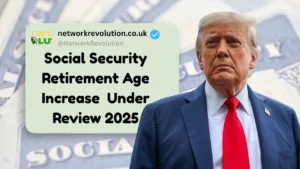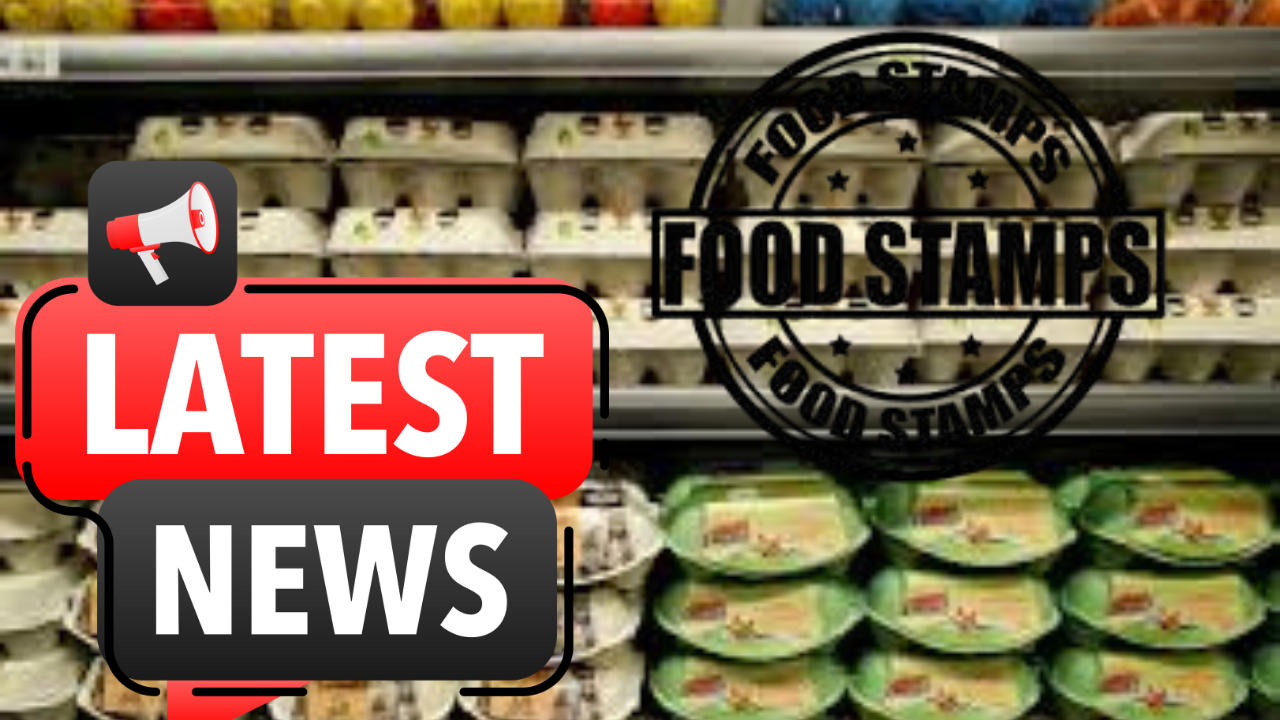In a shocking turn of events, the U.S. Department of Agriculture (USDA) has announced that the Supplemental Nutrition Assistance Program (SNAP)—commonly known as the food stamp program—will halt benefits starting November 1, 2025.

The announcement, made public on October 25, has sent shockwaves across the country, as the program provides essential grocery assistance to over 40 million low-income Americans. The decision comes amid a prolonged government shutdown and escalating political tensions in Washington over budget priorities.
According to a USDA statement posted online, the agency has officially run out of funds to continue SNAP payments, blaming Senate Democrats for holding up new spending measures.

“Bottom line, the well has run dry,” the USDA wrote. “At this time, there will be no benefits issued November 1. We are approaching an inflection point for Senate Democrats.”

This marks the most severe disruption to the SNAP program in decades — and could plunge millions of households into food insecurity overnight.
What Is SNAP and How Does It Work?
The Supplemental Nutrition Assistance Program (SNAP) is the largest federal food aid program in the United States. It provides reloadable debit cards, which recipients can use to buy essential groceries at supermarkets, convenience stores, and even online through platforms like Amazon Grocery and Walmart.com.

SNAP is a federal-state partnership, with Washington covering most of the cost of benefits and state governments handling administrative expenses. It has long been considered a vital safety net for low-income families, seniors, veterans, and individuals with disabilities.
In 2025, a single individual living below the federal poverty line of $15,060 was eligible for SNAP benefits, while a family of four could qualify if their income was below $30,000 annually.

As of July 2025, the maximum monthly benefit was $292 for an individual and $975 for a family of four, according to USDA data.
Who Is Eligible for SNAP?
Eligibility is primarily based on income and citizenship status. U.S. citizens automatically qualify if they meet the income threshold. Some refugees and asylees—including individuals from Cuba, Haiti, and certain other countries—may also qualify.
Green card holders and permanent residents can receive benefits only after five years of residency.
The One Big Beautiful Bill Act, passed in July under President Trump, significantly tightened work requirements for SNAP. Previously, able-bodied adults without dependents were required to work or participate in job training until age 54. The new law raises that age to 64, exempting only parents with children under 7, veterans, and the homeless.
Why Are Food Stamps Being Cut Off?
The decision to pause SNAP benefits is directly tied to budget cuts and political gridlock in Washington.
President Trump’s One Big Beautiful Bill, signed in July 2025, included $187 billion in cuts to SNAP over the next decade, according to the Congressional Budget Office (CBO). The bill also demanded that states contribute more to funding the program, especially those with high rates of “improper payments”.
Then came the government shutdown on October 1, triggered by a standoff between the White House and congressional Democrats over healthcare and Medicaid funding. With no approved spending plan, federal agencies, including the USDA, were left without the money needed to continue disbursing benefits.
Although SNAP has a $5 billion contingency fund, the USDA said it will not use these funds to continue payouts during the shutdown. Instead, it plans to reserve the money for disaster relief, particularly as Tropical Storm Melissa threatens the U.S. Gulf Coast.
“This fund is not enough to cover nationwide benefits for a full month,” the USDA noted, adding that states will not be reimbursed if they attempt to cover costs temporarily.
The Political Fallout
The decision has sparked outrage among both Democrats and social advocacy groups, who accuse the administration of using hunger as leverage in political negotiations.
Democratic lawmakers say that cutting food assistance during a shutdown is “cruel and unnecessary,” while Trump officials argue that Democrats blocked key funding provisions tied to healthcare reforms, forcing the current crisis.
Meanwhile, the Center on Budget and Policy Priorities (CBPP) estimates that over 40 million Americans—roughly one in eight citizens—will lose access to food aid if benefits stop in November.
This includes:
- 16 million children
- 8 million older adults
- 4 million people with disabilities
Several states have already warned of delays or disruptions in benefits for the coming month. Food banks and nonprofits are now bracing for a surge in demand as families struggle to fill the gap.
A Brief History: From Food Stamps to SNAP
The roots of SNAP trace back to the Great Depression. In 1939, the Food Stamp Program was launched under President Franklin D. Roosevelt to address widespread hunger and farm surpluses.
Recipients received orange and blue paper stamps—orange for general groceries and blue for surplus agricultural goods like eggs, flour, and cornmeal.
In 1961, President John F. Kennedy revived the program, eliminating the surplus-food requirement. President Lyndon B. Johnson later made it permanent by signing the Food Stamp Act of 1964.
By 1974, under President Richard Nixon, participation had grown from 3 million to 15 million Americans.
In the 1990s, the government phased out paper coupons and replaced them with Electronic Benefit Transfer (EBT) cards—a move that paved the way for the SNAP rebranding in 2008.
The Human Impact: What’s at Stake
The end of SNAP benefits could be devastating for millions of Americans who rely on the program to put food on the table.
Families already struggling with high food prices, rent increases, and job insecurity may find themselves facing immediate hardship.
“SNAP is the difference between having dinner and going to bed hungry,” said a spokesperson for Feeding America, the country’s largest food bank network.
If benefits are not restored soon, experts warn of rising hunger, child malnutrition, and economic strain—especially in states with higher poverty rates like Mississippi, Louisiana, and West Virginia.
What Happens Next?
Congressional leaders are now under pressure to reach a funding deal that restores SNAP benefits before November 1. While both parties acknowledge the program’s importance, the dispute over healthcare and spending priorities continues to block progress.
Meanwhile, several governors have urged Washington to release contingency funds or allow states to borrow against future allocations to prevent mass food insecurity.
For now, the USDA’s decision stands: no new SNAP payments will be issued after October 31.
Conclusion
The suspension of the Supplemental Nutrition Assistance Program marks a major blow to America’s most vulnerable communities. As political battles rage in Washington, millions of low-income families are left uncertain about how they will afford their next meal.
The USDA’s refusal to tap emergency funds and the continued government shutdown have created a perfect storm of economic and humanitarian crisis.
If Congress does not act soon, the coming weeks could see one of the largest surges in food insecurity in recent U.S. history — a grim reminder of how political stalemates can have devastating real-world consequences.

